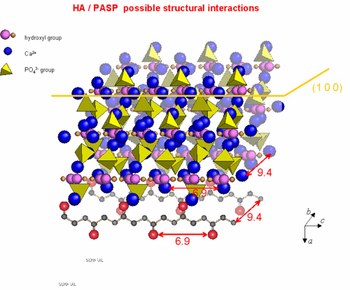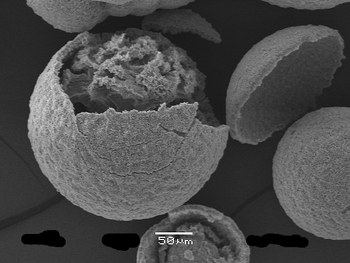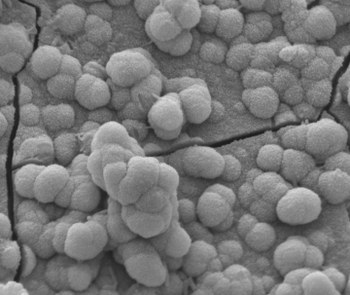Biomimetic Materials Chemistry

Biomimetic Crystallization and Structural Analysis
A relevant biomimetic strategy involves the use of organic molecules or macromolecules to modulate the crystal structure, crystallinity, morphology and stability through specific or non-specific interactions that mimic those occurring among acidic macromolecules and biogenic crystals.
The study of the effect of polyelectrolytes, polymers, drugs and isomorphous substitutions on the structure, morphology, chemistry and relative stability of calcium phosphates of biological interest provides a tool to investigate the role of matrix constituents in mineralization and the interaction of drugs with the biogenic mineral.

Inorganic-Polymeric Complex Architectures
The production of composite materials made up of calcium phosphates and polymers is of great interest for the development of biomaterials suitable to repair the skeletal system.
Our research is aimed to the design and development of inorganic-polymeric composites with complex architectures, including hollow microspheres, core/shell and porous microfibrous structures, with potential applications as bioactive molecules delivery systems and porous scaffolds.

Template Directed Synthesis
Biomineralization processes usually involve both structural and acidic macromolecules. Acidic macromolecules are rich in negatively charged groups, which promote their interaction with the charged inorganic crystal surfaces. The interaction can be specific, with the protein adopting a conformation and exhibiting charge distribution and repeating distances matching some structural motif of the crystal, or even non-specific, due to multiple electrostatic interactions. These macromolecules are believed to control nucleation, polymorphism, growth, chemical composition, shape, dimensions, orientation and texture of the inorganic crystals.
Our research activity is aimed to study the nucleation and growth of calcium phosphates on functionalized matrices, in order to develop innovative biomimetic processing strategies for producing ceramic thin films with a wide range of potential applications. Moreover, these studies provide interesting information useful for a deeper understanding of the biomineralization processes.